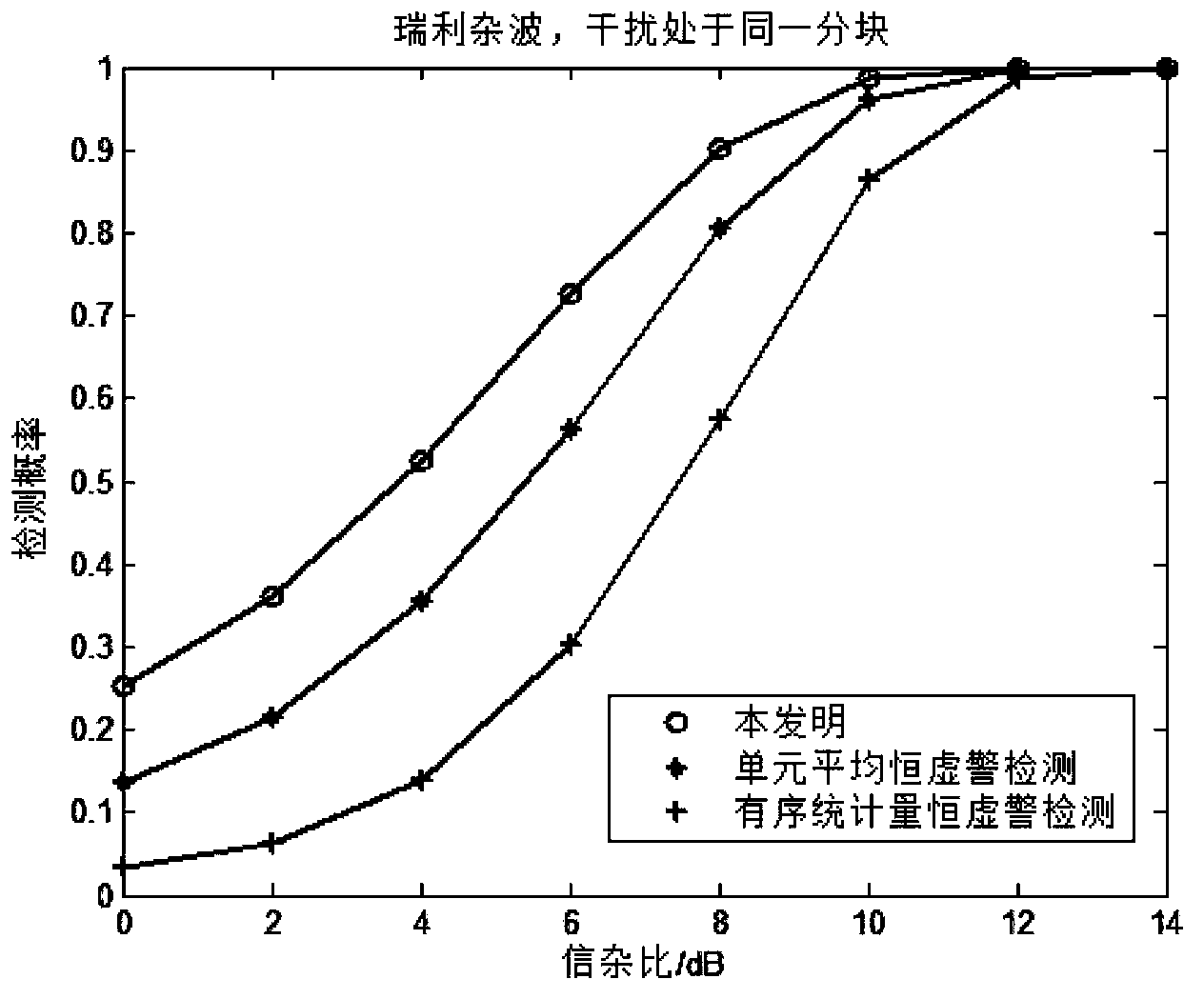Two-dimensional self-adaptive radar CFAR (constant false alarm rate) detection method
A constant false alarm detection and self-adaptive technology, applied in the field of target tracking, can solve the problems of CA_CFAR detection performance is good, detection performance decline, detection performance is not as good as to achieve the effect of improving the ability to deal with complex environments and improve the ability to deal with complex environments
- Summary
- Abstract
- Description
- Claims
- Application Information
AI Technical Summary
Problems solved by technology
Method used
Image
Examples
Embodiment Construction
[0039] refer to figure 1 , the specific implementation steps of the present invention are as follows:
[0040] Step 1, dividing the received echo signal matrix into blocks.
[0041] The radar receives an echo signal matrix with a size of M×N during target detection. To judge whether there is a target, each data unit of the echo signal must be judged one by one.
[0042] When the present invention detects radar targets, the received echo signal matrix is first divided into blocks, and then divided into n sub-blocks with a size of p×q, wherein: M, N, p, and q are not equal to 0, and p, q cannot be 1 at the same time.
[0043] Step 2, calculate the judgment factor α of the sub-block attribute by Monte Carlo simulation experiment.
[0044] To judge the attribute of a sub-block, there needs to be a judgment standard, and the judgment factor α is introduced here,
[0045] 2a) Define the mean ratio k=1,2,...n;
[0046] Among them, β k is the data mean value of the kth sub-...
PUM
 Login to View More
Login to View More Abstract
Description
Claims
Application Information
 Login to View More
Login to View More - R&D
- Intellectual Property
- Life Sciences
- Materials
- Tech Scout
- Unparalleled Data Quality
- Higher Quality Content
- 60% Fewer Hallucinations
Browse by: Latest US Patents, China's latest patents, Technical Efficacy Thesaurus, Application Domain, Technology Topic, Popular Technical Reports.
© 2025 PatSnap. All rights reserved.Legal|Privacy policy|Modern Slavery Act Transparency Statement|Sitemap|About US| Contact US: help@patsnap.com



